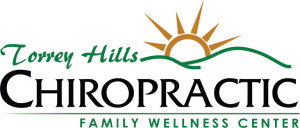5 Reasons Medical Office Space Demands a Rent Premium
 If you have ever looked into leasing medical office space it is hard to overlook the large price discrepancy between traditional office space and medical office space. Some buildings offer a mix of traditional office space for users such as lawyers, accountants or financial planners and also offer suites that can accommodate medical users such as dentists, physical therapists or optometrists. Vacant suites in these buildings usually have two asking rates – one for the traditional office user and one for medical users. Here are the top 5 reasons that medical office space leases at a premium.
If you have ever looked into leasing medical office space it is hard to overlook the large price discrepancy between traditional office space and medical office space. Some buildings offer a mix of traditional office space for users such as lawyers, accountants or financial planners and also offer suites that can accommodate medical users such as dentists, physical therapists or optometrists. Vacant suites in these buildings usually have two asking rates – one for the traditional office user and one for medical users. Here are the top 5 reasons that medical office space leases at a premium.
- Supply and Demand – Not all buildings are zoned for medical use and if they are, Landlords may opt to exclude medical use in the building. Some Landlords may allow for dentists and therapists, but may prohibit any users that draw blood. This means less inventory for medical users to choose from.
- Foot traffic – Medical users typically have high foot traffic which contributes to more wear and tear on the building. The increased foot traffic presents the need to hire more cleaning staff, purchase more supplies for the common area restrooms, and increases the amount of building maintenance. Elevators can become clogged causing a nuisance for tenants and patients alike.
- Parking – With the increased foot traffic comes the need for more parking. Most office buildings are parked at four stalls per one thousand usable square feet. Medical users can demand 1.5 or 2 times as much parking.
- Tenant Improvement Costs – It typically costs about $5.00 psf to re-carpet and paint a suite for a traditional office user. Sometimes the landlord will make other modifications such as adding or removing offices or even adding a break room. Minor suite modifications such as these can average around $15.00 – $20.00 psf. Improvements required to convert a suite to medical use can cost as much as $50.00 – $100.00 or more per square foot. This is because medical users usually need plumbing in all offices and could require other expensive improvements such as lead lined walls for x-ray use, specialty floor drains, or custom plumbing. Depending on the terms of the deal and the current market, the Landlord may contribute funds to cover partial or full tenant improvement costs.
- Cost to Relocate – Due to the excessive cost to build out a medical space, medical users prefer to stay put. Landlords can capitalize on the high relocation cost and entice tenants to renew their leases at escalated rates because the higher rent is still more cost effective than relocating.
When leasing office space, whether medical or traditional, it is important to know your exact needs, know the nuances of the local market, and have collective market intelligence in order to make the best choice for your business.
For more information, please contact Lindsey Smith, broker and founder of San Diego Office Properties. Lindsey can be reached at 619.871.5209 or Lindsey@sdofficeproperties.com. Check out the San Diego Office Properties website .
______________________________________________________________
 Lindsey Smith is a Del Mar resident and founder of San Diego Office Properties. She serves as a trusted advisor for San Diego’s owners and occupiers of commercial space. Lindsey comes from a family of “serial entrepreneurs” and has a true passion for helping local businesses find office space that is aligned with their corporate strategy, culture and budget. Lindsey is a graduate of the University of San Diego. She began her real estate career in 2003 working at a large corporate brokerage house and founded San Diego Office Properties in 2012. San Diego Office Properties functions under the KW Commercial umbrella which allows clients access to a national platform and corporate resources while capitalizing on the flexibility that only a boutique firm can offer.
Lindsey Smith is a Del Mar resident and founder of San Diego Office Properties. She serves as a trusted advisor for San Diego’s owners and occupiers of commercial space. Lindsey comes from a family of “serial entrepreneurs” and has a true passion for helping local businesses find office space that is aligned with their corporate strategy, culture and budget. Lindsey is a graduate of the University of San Diego. She began her real estate career in 2003 working at a large corporate brokerage house and founded San Diego Office Properties in 2012. San Diego Office Properties functions under the KW Commercial umbrella which allows clients access to a national platform and corporate resources while capitalizing on the flexibility that only a boutique firm can offer.










You must be logged in to post a comment Login